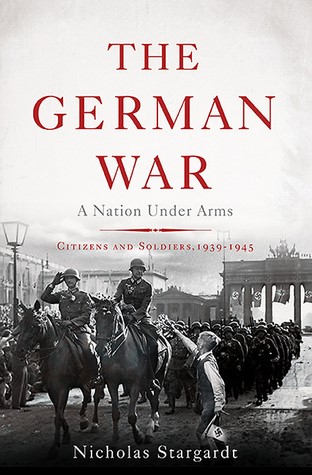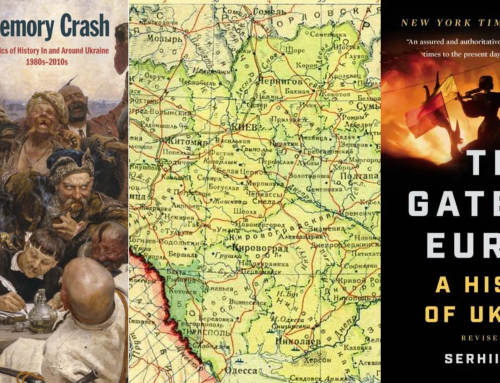This book review was written by Joke van der Leeuw-Roord, EuroClio Founder and Special Advisor.
Interest in the Second World War has been part of my life, as I was born in the shadow of this war and I was made aware of it through many stories of my parents’ family and friends and by its physical legacy in my surroundings. This was similar to most of Dutch people of my generation, however at one point it was very different: I had an uncle living in Germany. He had been a forced laborer, had fallen seriously ill and was nursed back into life by a woman; he subsequently fell in love with. My family met them on a more or less regular basis, and as soon as my mother and aunt were together, they started to quarrel about their level of War victimhood. As a Dutch child I of course had no compassion with my German aunt, and for long I time experienced stories about the German suffering merely as propagandistic, to release the burden of a dark past. However eventually my professional curiosity got the better hand and in the last five years I have been intensely engaged to get a better understanding of what the war and its legacy meant for the Germans themselves. I consider The German War: A Nation Under Arms, 1939-1945 written by the Oxford historian Nicholas Stargardt as a great read for developing such insights.
The German War: A Nation Under Arms, 1939-1945 offers wide insights into the German experience from the view point of soldiers and civilians in the late Thirties and during the war time, using a wide range of source materials, among them many letters and diaries. Stargardt follows several of their authors over a longer period of time. Through this approach, the reader is able to follow the whereabouts and patters of thinking of several individuals and couples. Through these documents it becomes clear that much more was known, written or said about issues, that people outside Germany considered always highly secret in the Third Reich. Censorship of the letters from the soldiers was surprisingly minor; the fate of the Jews was therefore common knowledge. When the bombing of German cities in 1943 becomes very intense, he demonstrates that the general attitude of the public is to understand that these bombing are retaliation for what the Germans have done to the Jews. This argument comes back, when after a break, the heavy bombing is resumed in the summer of 1944. Stargardt refutes the mantra Wir haben es nicht gewuest (we did not know about it) with ample evidence.
The German War: A Nation Under Arms, 1939-1945 looks in a manifold of aspects of German society, paying special attention to the position of women, ideological placed in the family and the kitchen but in fact a massive (voluntary) workforce and minorities, with of course a special focus on the Jews. But also the treatment and killing on the German disabled, psychiatric patients and socially deprived is breathtakingly described in the chapter Extreme Measures. In this horrible episode the German churches play a somewhat more human role, but in general is Stargardts’ judgement about their role during and directly after the war rather harsh: the Churches did not show the Christian compassion they should have stand for. Or even worse sometimes: several of their high placed members of the clergy gave full support to the Nazis.
A chilly red thread in the book is the role of Nazi brainwashing and the brilliant but disgusting manipulations of the Goebbles’ propaganda machine. It shows how important this instrument was in influencing the mind and hearts of the people in Germany. The radio and written press were pivotal for its success but also culture and art were addressed. Goebbles spend not less than 25% of his budget on culture and theater performances to make sure that critical citizens had an outlet for their possible controversial thoughts. However, even with all propaganda tools, not each programme was successful. The intended building of a national community, which was voluntary willing to sacrifice all for the fatherland, failed due to traditional localism and regionalism and massive inner migration. People kept complaining about their fate and kept accusing each other of misusing benefits.
Why should you not read this book?
The German War: A Nation Under Arms, 1939-1945 is a big book of about 700 pages, giving a dramatic and worrisome picture of how a highly civilized nation, which in a relative short time disintegrated into chaos, violence and terror. It leaves you with little hope for humanity when it encounters exceptional circumstances. So many lack moral qualities. willing to realize the consequences of what they heard and perceived.
Why should you read this book?
The German War: A Nation Under Arms, 1939-1945 shows history in its full complexity, with blur lines between perpetrators, bystanders and victims. A quote in the first weeks after the liberation written in the diary of Victor Klemperer, the German academic of Jewish origin, pictures this very well when he wrote Curious conflict within me: I rejoice in God’s vengeance on the Henchmen of the Third Reich .. and yet I find it dreadful now to see the victors and avengers racing through the city which they have so hellishly wrecked (Dresden). With this and many other quotes from eyewitnesses we are able to have an in depth insight of dreams, expectations, feelings and behavior of many German civilians and soldiers. It leads to an adverse picture of a divided society, where many, but not all, were willing to fight until the very last moment and subsequently were unwilling to face the post war situation.
How can history, citizenship and heritage education benefit?
The German War: A Nation Under Arms, 1939-1945 offers ample opportunities to discuss about the way we talk about the blame for crimes against humanity and war crimes. It might be worth to explore this issue with examples given by Stargardt. He proves how massive the German military in Central and Eastern Europe was involved in such crimes, and how many of them looked away, despite even anti-Nazi convictions. However he also shows the lethal impact of the aerial Allied bombing on cities, and its citizens and the violence used by the liberators of the Red Army. As the book gives a wide picture of many propaganda campaigns it also offers the opportunity of deeper thinking about the use and impact of (war) propaganda.
[su_table]
| Author | Nicholas Stargardt |
| Original title | The German War: A Nation Under Arms, 1939-1945 |
| Original language | English |
| Available in | Already published or in preparation in Chinese, Czech, Dutch, French, German, Italian, Polish and Spanish. |
| Publication year | 2015 |
| No. of pages | 700 |
| Genre | History |
[/su_table]













